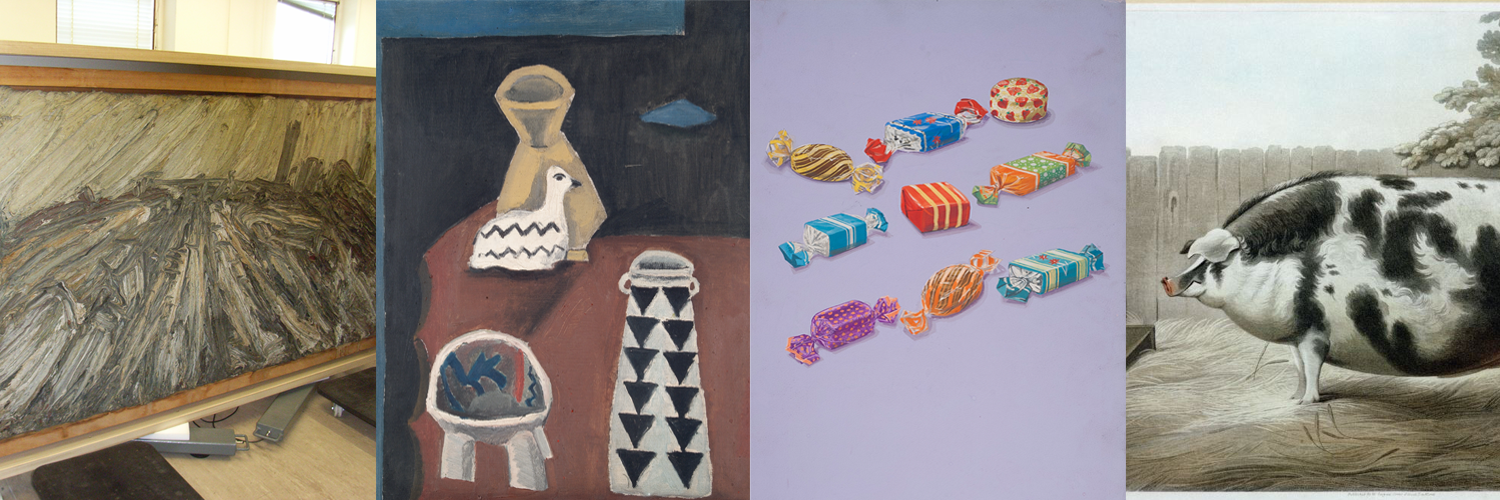
Art Collections in Conversation: a series of FREE 45-minute lunchtime events
- 2016 FULL PROGRAMME
- Bookings here: http://www.eventbrite.co.uk/o/university-of-reading-art-collections-10641110987
An opportunity to see and collectively discuss material from the University of Reading’s diverse Art Collections in a series of object-focused events.
Artworks which are usually in storage will be brought to venues around campus.
Learn how to access and use the Art Collections within your research. Led by the University’s Art Collections Officer, Collections Officer and invited guests.
Each event will be broadcast live via Periscope. Live Periscope streams can be accessed through the University of Reading’s Art Collections twitter @UniRdg_ArtCol
Free to attend, but booking is essential.
No food or drink is permitted.
Information about the Art Collections
The University of Reading has an eclectic Art Collection. Artistic works are held within the University’s Special Collections, and within the University’s museums – including the Museum of English Rural Life.
A number of significant artists are represented. This includes: Camden Town Group member Walter Sickert, printmaker Stephen Buckley, surrealist painter and poet Julian Trevelyan, figurative painter Leon Kossoff, Isotype pictogram designer Gerd Arntz, master of the woodcut Allen W. Seaby, cubist Max Weber, engraver Stanley Anderson, abstract photographer Alvin Langdon Coburn, renowned naturalist painter Charles Tunnicliffe, 17th century Baroque artist Peter Paul Rubens, and many others. The collection includes oils, works on paper and printmaking practices.
Artworks relate to the history of the University, its teaching methods and the varied interests of individuals who have acquired works for the collection over the years. The collection is further enhanced by the work of previous students.
The University of Reading also cares for over 700 boxes of original artwork used to illustrate Ladybird children’s books.
The University continues to inventory and catalogue the Art Collections. As we do this, the intention is to build the profile of the collections. Our aim is to make the artworks accessible and relevant to the University’s students and specialist researchers. We would like to continue to engage a wider community of users, including the public.


